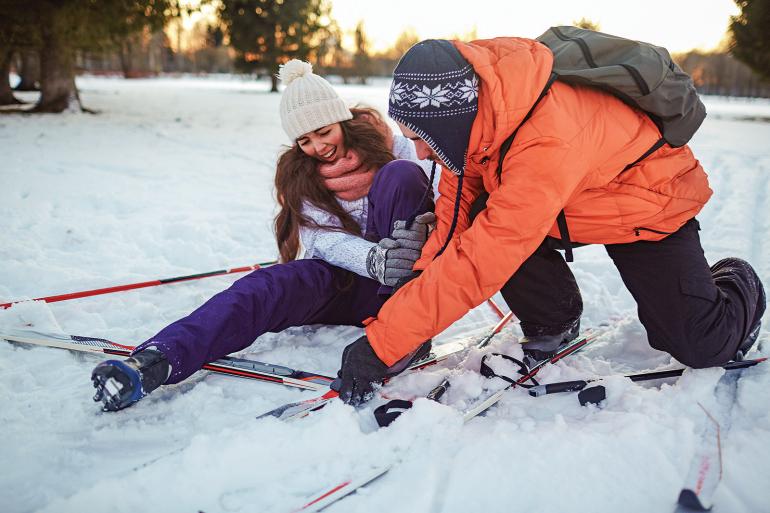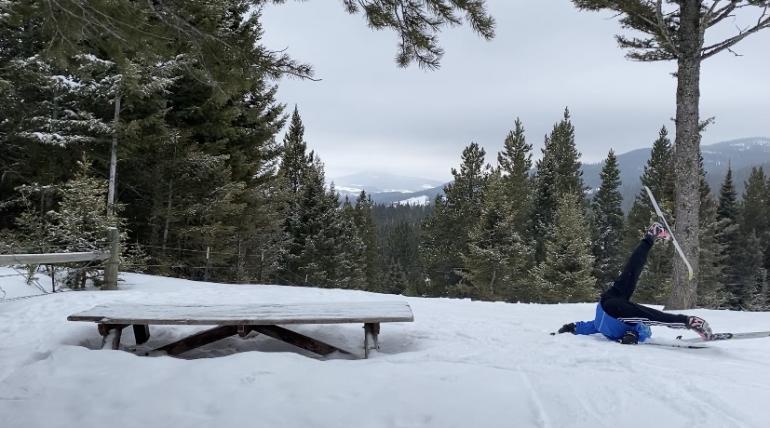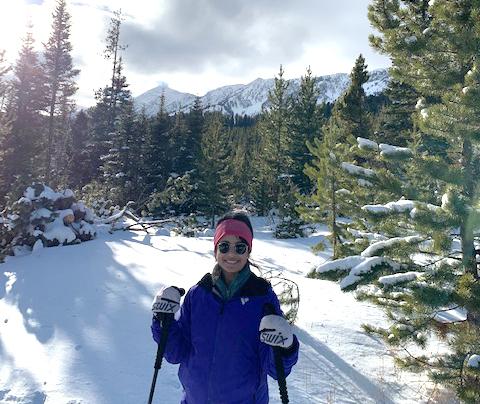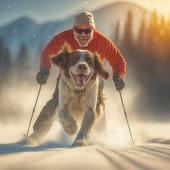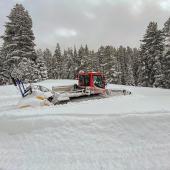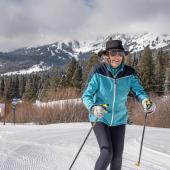Nordic Nuptials
Marrying into cross-country skiing.
Committing to a lifetime with my fiancé wasn’t the scary part—it was the skiing that came with it. Days after getting engaged, I consigned to another ambitious commitment: learning how to cross-country ski.
You see, I’m from New York City. Urban jungle, not forested mountains, is my natural habitat. I’m not an outdoors person. I don’t take chances in the elements. I don’t like getting out of my comfort zone. Gabe, on the other hand, is from Bozeman.
One cold morning during our extended stay in Montana, I strapped into a pair of hand-me-down skis and boots, layered in borrowed active wear from Gabe's family and friends. Although my engagement ring commemorated the decision to spend a lifetime with my partner, my acceptance of ski gear marked the embracement of his family. But at the same time, it was a shock to the system.
So, there I was—outdoors, for some reason, on a frigid day, at the top of an icy hill, clutching ski poles that last belonged to Gabe when he was in middle school.
My first mission was to descend a hill on skis, which were now securely locked onto my boots after the great efforts of my soon-to-be husband. Other members of my party had long reached the bottom of this hill, where the cross-country trails began. They glided like swans on water, and now turned back to check on the different breed of non-skiing waterfowl and her slow progress.
I dug my poles into the snow, one and then the other, and somehow forced myself down the hill. Thanks to gravity and intense focus on my balance—lest I tumble to my death—I was soon on the groomed trails.
All around me, adults and children moved smoothly over the snow. It was hard to fathom how fast everyone could propel themselves on skis across the flat ground. While skis apparently increased the speed, elegance, and otherworldliness of the folks in my environs, I moved decidedly slower on skis than I ever would on foot. But there was nothing else to do, than to just move in this completely new way.
They glided like swans on water, turning back to check on the different breed of non-skiing waterfowl and her slow progress.
That first day and in the weeks to come, I learned that skiing was not just a new physical language; it required me to process a whole new lexicon. In order to go downhill without picking up too much speed, I learned to face my skis in a “snowplow” position, or the shape of a piece of pizza. But the courage to master this new technique escaped me at first. Instead, I clutched my mountain man’s waist, placing my skis between his as he maneuvered us both down. I kept my eyes shut the whole time, hoping we’d make it to the bottom.
What I never imagined before cross-country skiing was that you also have to learn to go uphill on skis—and it’s not easy. In time, I would learn how to place my skis outward in a V shape, making the opposite shape with my skis from a snowplow, to prevent me from sliding down the hill—known as the “herringbone.”
In time, I’d also become more comfortable going down steeper hills by implementing the “outhouse crouch,” the sophisticated and effective phrase suggested by a friend of the family and former Olympic team skier, reminding me to get my bottom close to my feet once I picked up speed, but not too low that I touched the ground.
“First tracks” is when skiers make their own paths on fresh snow. I often called out “first tracks!” after stepping off the groomed trails, with the tips of my skis in the untouched snow.
“Sitzmark,” which I learned early on, is the impression left in the snow after a skier takes a tumble off the trail. Many times I’d fall on my own volition to prevent myself from careening downhill toward a thicket of trees—or I’d uncontrollably crash-land in a pile of snow—creating a nice deep snow-pothole. Several hours later, when we’d pass the same spot on our return trip to the car, that sitzmark was still there, as if to remind me of my foible.
I also learned that being outdoors in the winter for hours on end did not have to translate to torture. At certain sections of the trails, where near-silence and fragrant pines surrounded me, my mind became clearer and refreshed. That is, if the terrain wasn’t too icy, and the hills weren’t too steep, and my legs and skis weren’t tangled like spaghetti.
Like the future that lay before me with Gabe, I knew there would be many unexpected turns and falls with skiing—albeit with more bruises, more snow in my shirt, and more fear piercing my heart than ever before when accelerating downhill at an uncomfortable speed.
A few days after that first day, I returned to Crosscut and stood at the top of that aforementioned first hill, and I knew I was ready: ready to fall on my ass multiple times—that day and on many more days in the season to come.
To get geared up for cross-country skiing, swing by the Round House on W. Main in Bozeman.


